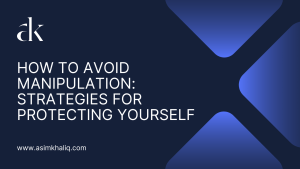
The Power of Pause: 7 Seconds Rule of Active Listening
The greatest compliment you can pay in a conversation is to listen attentively.” – Susan Roane.
In high-stakes environments, louder voices often take the spotlight, leaving quieter members undervalued. But amidst the chaos of rapid-fire exchanges and eager interruptions, there lies a potent tool that can transform conversations and relationships: the power of pause. At the heart of this concept lies the 7 Seconds Rule of Active Listening.
What is the 7 Seconds Rule?
Active listening requires more than just hearing; it requires concentration, understanding, and responding appropriately to the speaker. It’s about truly understanding and engaging with what someone is saying.
The 7 Seconds Rule emphasizes pausing for at least seven seconds before responding. This brief silence allows for deeper comprehension and ensures that every voice is given the attention it deserves.

The Plight of Unheard Voices
In environments dominated by quick-witted speakers and assertive personalities, quieter individuals often find themselves sidelined. The failure to actively listen leads to the suppression of valuable perspectives and ideas, hindering collaboration and innovation.
Empowerment through Active Listening
By embracing the 7 Seconds Rule, we empower every participant in a conversation. Whether in a boardroom meeting or a casual discussion, active listening ensures that everyone can contribute their thoughts and insights, fostering a culture of inclusivity and respect.
Quality Ideas and Insights
The benefits of active listening extend beyond inclusivity; it leads to the discovery of deeper insights and more creative solutions. By allowing space for reflection and contemplation, the 7 Seconds Rule enables individuals to articulate their thoughts more clearly and share ideas that might remain unspoken.
Cultural Shift towards Active Listening
Implementing the 7 Seconds Rule signifies a cultural shift where every voice is valued, and quick responses are not the sole focus. It promotes a mutual respect and understanding climate where all participants’ input is sought and appreciated.
The 5 Steps Process of Active Listening
- Asking Questions: Encourage dialogue and demonstrate genuine interest in others’ perspectives.
- Being Silent: Practice active listening by giving your full attention without interrupting.
- Reinforcing: Show empathy and understanding through verbal and non-verbal cues.
- Counting to 7: Pause before responding to ensure thoughtful and considered replies.
- Observing Positively: Pay attention to verbal and non-verbal cues to fully grasp the message.
Benefits of Implementing the 7 Seconds Rule
Organizations and individuals benefit significantly by embracing the power of pause and practicing active listening. Improved communication, enhanced collaboration, and a deeper understanding of diverse viewpoints are just some rewards that await those who adopt this transformative approach.
You might Like these blogs
Conclusion
In a world where haste often triumphs over deliberation, pause offers a compelling alternative. By adhering to the 7 Seconds Rule of Active Listening, we pave the way for meaningful dialogue, inclusive decision-making, and genuine connections. Let us embrace this simple yet profound concept and unlock the full potential of our interactions.
The power of this purposeful pause is striking. In just 7 seconds, you create a judgment-free space that elevates emotional intelligence and breaks down communication barriers…
As you embrace the 7-second rule, you’ll unlock more profound levels of active listening and amplify the voices that matter most. In the words of Kyle Idleman, “Listening is an opportunity to show people you value their thoughts, perspectives, and feelings.” You’ll be amazed at the creative solutions, strengthened bonds, and emerging collaborative achievements.
FAQs.
Practice makes perfect. Be mindful to pause for 7 seconds after others speak. Use reminders if needed as you build the habit. You can briefly explain you’ll be pausing to ensure complete understanding.
I am fighting the urge to formulate responses while others speak. They are letting your mind wander or multitasking and rushing to give advice instead of grasping perspectives. Impatience and ego also hinder active listening.
Yes, it may be even more crucial virtually when speaking over each other accidentally is easier. That pause allows everyone to convey their points without interruption fully.
Empathy is vital. It means temporarily setting aside your view to deeply understand the speaker’s perspective, feelings, and context. The 7-second pause provides emotional space for empathy.
Leaders must model active listening behaviors like the 7 Seconds Rule. Build it into meeting protocols. Provide training. Most importantly, it should be anchored in values like respect and inclusion.
The opposite is true. The 7-second pause shows you’re fully present and thoughtfully considering what was said. It’s active listening in action.
The 7-second pause was chosen because it’s just long enough to allow your mind to quickly process what was said without being so long that it feels awkward. This timing strikes the right balance.
It may feel unnatural initially since we’re culturally conditioned to respond quickly. However, once you practice the 7-second pause, it becomes a healthy, mindful habit. The intentional silence enhances presence.
Not at all. While it creates purposeful pauses, it allows for deeper understanding and more meaningful dialogue. Without judgment-free listening, conversations become shallow and counterproductive.
Like any habit, it takes continuous practice. If you get caught up and respond quickly, just reset and aim to pause after the next person speaks. Each purposeful pause matters.




